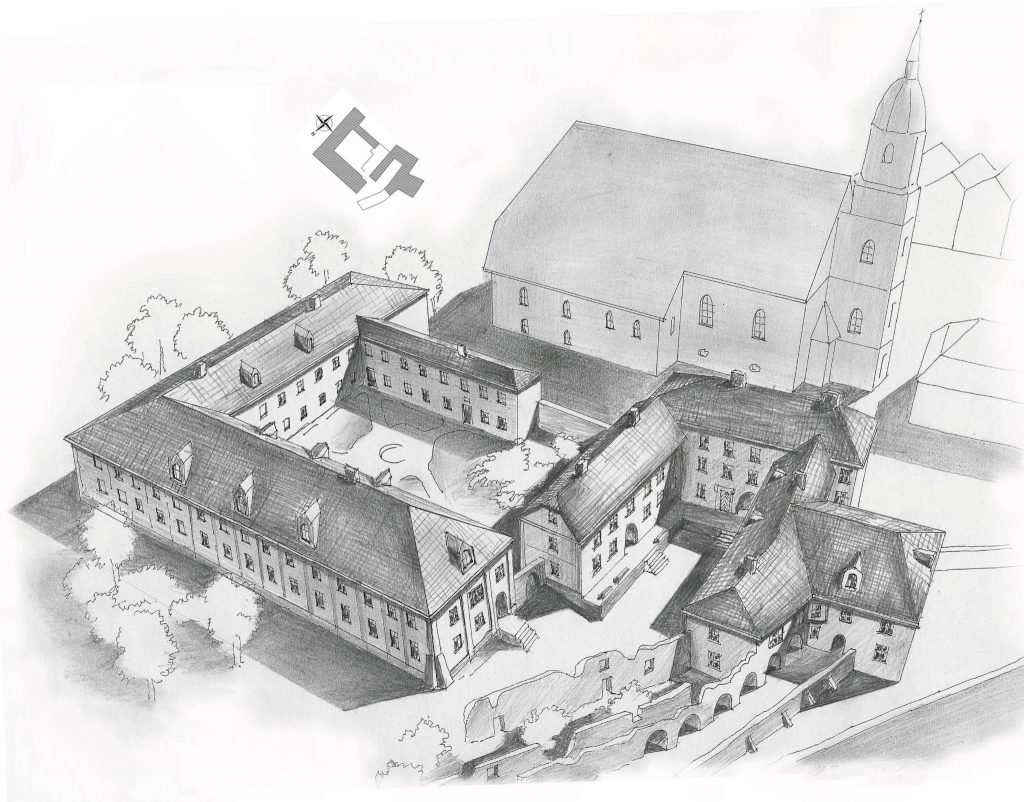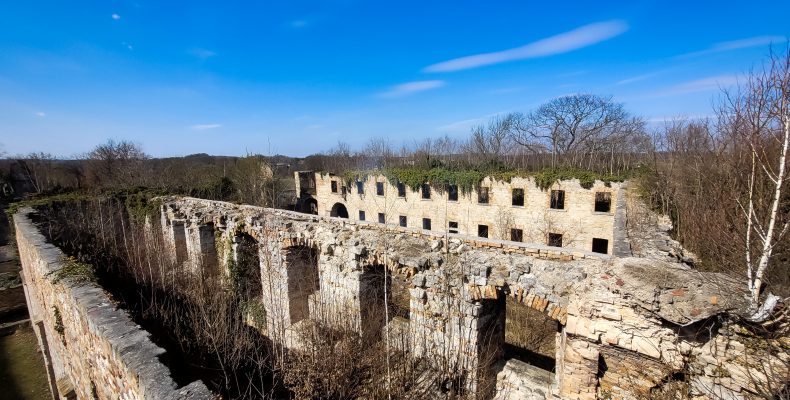Taking advantage of the short break between the scope of work completed in 2023 and the work planned for 2024, we decided to answer a frequently asked question: why “Monastery of Souls”? No, it has nothing to do with ghosts and other spook, but rather with spiritual life. ![]()
Most likely, in 1217, a hunting castle of Henry the Bearded, Prince of Wrocław, already stood in this place. The beginnings of the development of Nowogrodziec city can be traced back to the same year, when the princely couple dedicated the castle to the nunnery of the Congregatio Sororum Sanctae Mariae Magdalenae de Poenitentia, known as the Order of Mary Magdalene of Penitence, or briefly the Order of the Magdalenes. The splendor of Nowogrodziec is directly related to the development of the Magdalene congregation in a defensive monastery that was expanded, rebuilt and restored after natural disasters and invasions. In 1495, the order became the formal owner of Nowogrodziec city, and already in 1500 it provided access to water from a wooden aqueduct, supplying water to the city from a source over 2 km away. For almost 600 years, the fortified monastery was the center of shaping the urban fabric and culture of Nowogrodziec; its present-day shape is due in large part to the order of the Magdalenians, who managed it at that time. Considering this part of Nowogrodziec’s history, we naturally want to commemorate it by emphasizing in today’s name the fact that it was a monastery.

So why not a “Magdalenians monastery”? There are those who claim that the complex is called this and should be called this way forever and ever. There are several reasons not to use this name in the new life of the monastery complex, even out of respect for CSSMM. The first thing is the further history of Nowogrodziec. For over 200 years, the former fortified monastery of the Magdalene Order has not belonged to the congregation and does not function as a monastery. In 1810, the Prussian state secularized the monastery lands and later allocated them, among others, for administration purposes and the Lutheran seminary. The latest and, it must be admitted, disfiguring changes in the architecture of the former monastery buildings come from this period. At one point, a fire station was even built just below the northern façade, within the monastery’s defensive walls. But should we erase the achievements of 130 years of other governments over the monastery and pretend that it has always been and will be a Magdalenian monastery? To pass over in silence, for example, the Lutheran seminary that openly opposed the Third Reich? People who breathed new life, although so different from the monastic life, into these walls? No one who values history is allowed to do this. The buildings of the fortified monastery ceased to be a monastery of the Order of Mary Magdalene of Penance in 1810.

However, recent history turned out to be the worst period for the technical preservation of the facility. The war was quite kind to the complex – what is one artillery shell compared to the enormity of this building? Yet back in the 1950s, Leon Piątkowski, a well-known regionalist, photographed the furniture in individual rooms and the almost complete roof structure with covering above the buildings. Nevertheless, the “communist people’s authorities” refrained from taking any action in favor of the buildings, which could even have been intended for municipal apartments. Devastation began and lasted throughout the period of the “Polish People’s Republic”. The former fortified monastery entered the new reality of the Third Polish Republic as a ruin and a place of drunken libations, a garbage dump, and a space for risky youth games.

For over 700 years, however, the monastery was a place for the spirit, a place where contemplation and action for high culture by shaping urban life, to what the sisters of the order of Mary Magdalene of Penance were devoted for 600 years, and for another 130 years, characters were forged in the teacher’s seminary, and in buildings intended for public administration, legal order was maintained.
Our goal is to reverse the destruction of the Polish People’s Republic by restoring spiritual values in this place, promoting culture and supporting the development of the city. These assumptions and respect for the activities undertaken by the previous managers of the facility, starting with prince Henryk the Bearded and his wife Hedwig Silesien, prompted us to give the second part of the project’s name. Therefore, the “Monastery of Souls” is both a marking of the former function of the monastic buildings, as well as an expression of the desire to restore spiritual life there.

